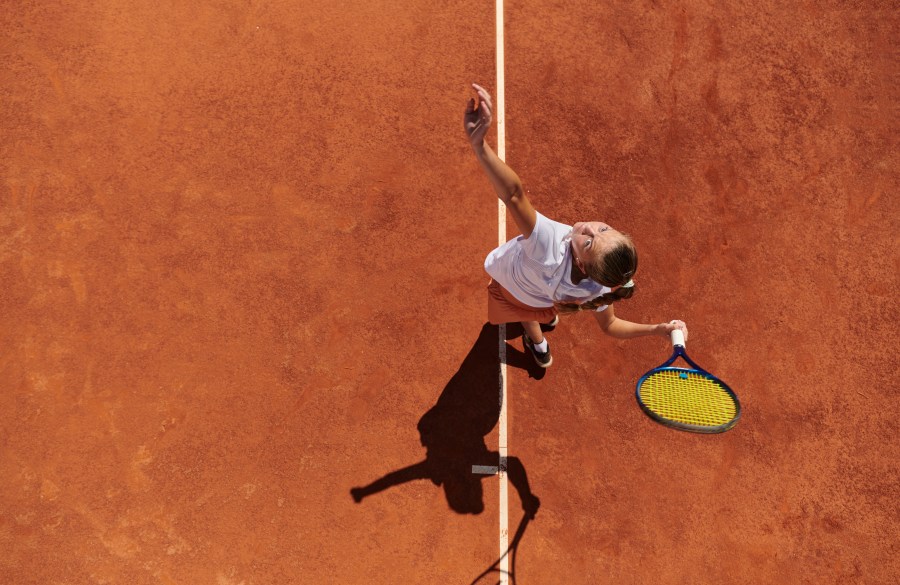If you’re still feeling the Wimbledon spirit from this month, Alan Morton, course tutor at The Fitness Group, the UK’s leading training provider, says there are things you can do in the gym to improve your own tennis performance.
When creating a routine of sport-specific exercises, we must examine the demands of the sport, and look at commonly used movement patterns, as well as the muscles used to action these movements, that are performed.
This selection of exercises to improve your tennis performance are resistance based, looking to build you muscular strength, stability and endurance to maximise your tennis playing abilities. Give them a go today and reap the racquet skill rewards!
Exercise 1 – Pallof press
The first area to strengthen is the core. A common phrase in the fitness and conditioning world is ‘you cannot fire a canon from a canoe’, meaning that without a strong core foundation, it’s harder to generate force. The primary role of the core is to also prevent unwanted movement – so, our first exercise is specifically designed to challenge the core by resisting movement. Use a cable machine or resistance band for this exercise.
How to do it: Position the cable machine or band at chest height, standing sideways to the cable. Pull the cable or band with both hands, holding it at chest height and bracing your core as you extend your arms, pushing the pulley away from your chest. Resist the pull back of the cable or band by keeping your torso still, only allowing your arms to extend forward and back to the chest. Do 3 sets of 10 reps, holding for 6 seconds per rep, with a 1 min rest between each set.
Exercise 2 – Rotational medicine ball throw
Tennis shots require rotational force, so an exercise that practices this, like this rotational medicine ball throw, is the perfect exercise for improving technique.
How to do it: Stand with a moderately heavy medicine ball in your hands, held at the hip opposite to the side of the wall you are throwing the ball. Throw the ball across the body towards the wall, rotating the back leg to help generate force. This should be an explosive movement, so throw the ball as hard as you can against the wall. Repeat 3 sets of 10 reps, with a 1 min rest between each set.
Exercise 3 – Multi-directional lunge
Lunges are common in tennis, so we want to be able to lunge in all directions. A multi-directional lunge is particularly a great exercise to improve lower body strength, stability and mobility.
How to do it: Step forward with one leg, taking a long stride and lowering into a lunge, bending both knees while making sure they don’t go over your toes, and keeping your posture upright. Drive through your front heel to return to standing. Repeat by stepping forward with the opposite leg and then lunging. Follow this with a side lunge, rear lunge, and then swap legs and repeat for a total 10 reps. Do 3 sets in total. Add a weight or a torso rotation at the bottom of the lunge to add more stability and core work.
Exercise 4 – Banded shoulder press
A banded shoulder press is a great exercise to help engage and strengthen the stabilising muscles of the shoulder, ensuring they stay strong and injury free.
How to do it: Wrap a resistance band around your wrists and lift your arms out in front of you so that your hands are in line with your shoulders. Raise both hands slowly above your head until they are fully extended, keeping the tension on the band by pushing out against it as you raise. Do 3 sets of 5 reps, holding for 2 secs at the top.
Exercise 5 – Kettlebell swing
Most physical power for playing tennis comes from the lower body, specifically the legs and hips, and is transferred through the upper body before the shot is played. The kettlebell swing replicates this lower body into upper body movement, and improves muscle coordination to allow greater strength and power for the tennis player.
How to do it: Grab the handle of the kettlebell with both hands, keeping your palms facedown and hips square. Bend forwards from your hips, keeping your back straight with arms extended until the kettlebell sits below the knees. Drive your hips back, allowing the kettlebell to swing between your legs, and then drive your hips forward, allowing the momentum to swing the kettlebell and bring your arms up and overhead. Keep your glutes and core engaged, so as not to arch your back at the top of the swing – the upper body should only guide the direction of the swing, not generate the force. Complete 3 sets of 10 reps, generating force on the swing and a controlled descent.








